http://edition.cnn.com/2014/12/24/world/asia/remembering-sri-lanka-tsunami/index.html?hpt=hp_c2
A decade later, remembering a Sri Lanka town wiped away by tsunami
December 26, 2014 -- Updated 1808 GMT (0208 HKT)
STORY HIGHLIGHTS
- CNN's Paula Hancocks was in Hambantota in 2004 when tsunami struck
- The landscape was nearly flat after the tsunami, with buildings washed away
- Amid incredible devastation, scenes of incredible humanity and generosity
(CNN) -- A dozen young children chatter and giggle around me, taking my pad and pen to write down their addresses very carefully. This way, they tell me, I'll know where to send help.
But how do you tell a six-year-old an address no longer means anything -- houses and roads are gone and in too many cases, so are families.
It was not just the young who could not comprehend how their world changed on December 26, 2004.
In Hambantota on the south coast of Sri Lanka, a parent stumbled through mangled debris in the area they assumed their house had once stood, looking for lost children. Siblings, children, cousins, all looking for a sign of relatives they lost in a split second when the water came.
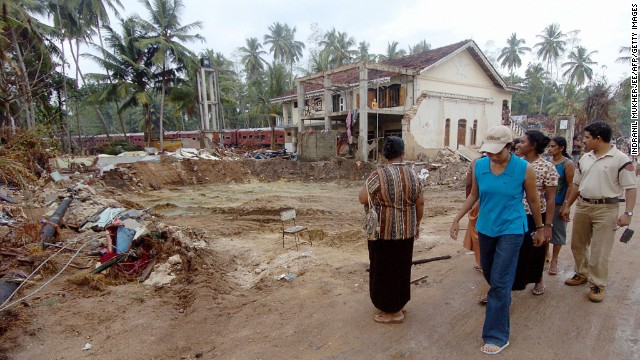
Standing in the middle of what was once the marketplace of this seaside town, I looked around at a landscape that was almost flat. No buildings for miles, giving a clear view of the sea that was deceptively calm and serene.
Only one temple was left standing, the one structure built from concrete. Homes were washed away with residents still inside, market stalls and thousands of shoppers didn't stand a chance against the sheer force of mother nature.
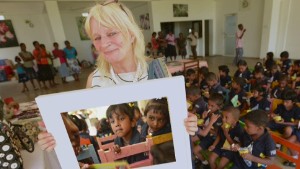
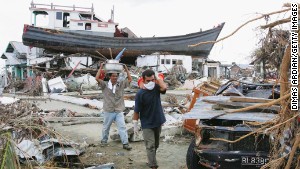
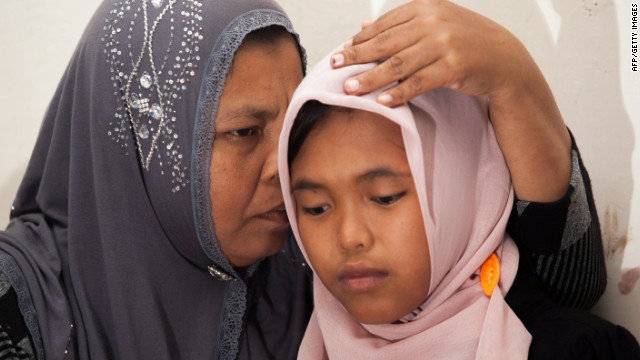
It is impossible to capture the extent of the devastation on camera and only those who lived through that day know its true horror. But one overwhelming memory for those who arrived afterward is the look in survivors' eyes.
I accompanied a U.S. doctor working for Americares, Jonathan Fine, who had volunteered to help and deliver desperately needed supplies. He told me he would never forget "the victims, dead-eyed in their hospital beds, lying there, staring at us, wondering what their stories were, how they'll ever learn to cope with this, what they've seen, what they've lost."
And yet in the midst of the misery I witnessed in Sri Lanka was incredible generosity. Residents who had lost everything, who had seen horror beyond imagination, running up to us to offer a face mask to help cope with the unmistakeable stench of death, trying to give us a bottle of water.
One man even apologized we were not seeing his country at its best, begging me to come back when it was all over so I could experience the true beauty and hospitality of the island and its people. He then resumed the search for his brother, sister and parents.
The sheer scale of the disaster was difficult to overstate.
One Hambantota hospital that could take 300 patients at a push saw 1,000 serious injuries in the first two days alone. Basic drugs many of us take for granted ran out quickly and the bottleneck of relief, familiar in such disasters, took time to clear.
And yet rarely did I see frustrations spill over. Residents helped each other and comforted each other.
One textile factory had been badly damaged, some of the workers were dead or missing. But rather than wait for outside help to arrive, the workers cleared the building of mud, debris and bodies so they could go back to work.
Many of the women were married to fishermen who had lost boats or were too scared to go back out on the water. Without the factory, their families had no income.
Natural disasters are cruel and brutal. There is no one to blame and little comprehension.
And yet they never fail to restore my faith in human nature. Strangers work together to pick themselves back up and rebuild their shattered lives. Many thinking of others rather than themselves.
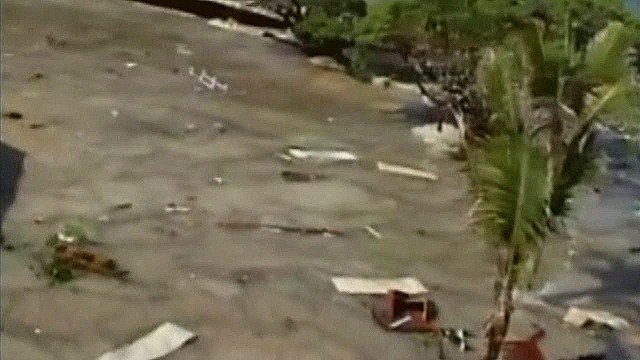

沒有留言:
張貼留言